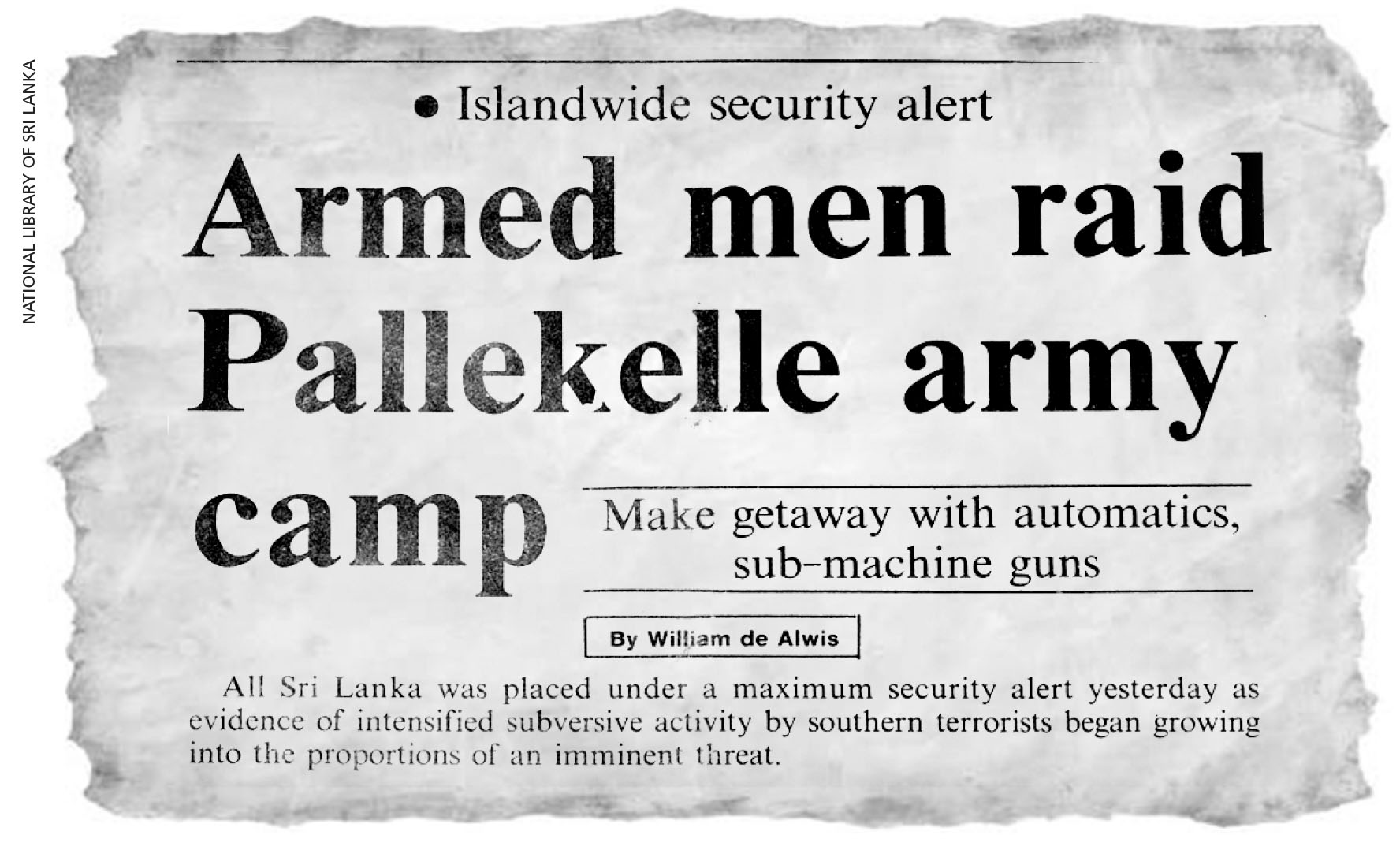1987
A Second Southern Insurrection Flares Up
JVP rebels cause pandemonium islandwide
The last thing a state whose military was confined to barracks by the occupation of its northern territories by a foreign power’s peacekeeping forces needs is an insurrection to break out in the south.
And that was precisely Sri Lanka’s misfortune in 1987 when a second insurgency by the militant Marxist Janatha Vimukthi Peramuna (JVP) broke out in April of a cruel year.
In fact, the JVP had been resurgent and violently active since December 1986 when it abducted and killed a leader of the University of Colombo’s Independent Student Union (ISU).
Designated a terrorist organisation by the same President J. R. Jayewardene against whom its leader Rohana Wijeweera had contested in the 1982 presidential poll, the JVP went underground and carried out a series of small-scale bombings during the rest of the year.
Previously, its most devastating act of terrorism had been the bombing of Colombo’s Central Telegraph Office (CTO) in May of 1986, which claimed 14 lives and sparked off anti-Indian sentiments in state universities.
But following the JVP’s full on attack of the Sri Lanka Army camp at Pallekele in April 1987, a page was turned – and there was no looking back in a deadly, albeit low intensity, war against the state and its people that resulted in an estimated death toll of between 35,000 and 60,000 – such was the scale of uncertainty in the deadly politicide that ensued.
The debilitating internecine civil conflict – lasting up to December 1989 – saw a spate of arson, assassinations, subversive political propaganda, and attacks on civilian and military targets, which prompted the government to unleash its own brutal counterinsurgency measures.
To add chaos to the confusion, shadowy paramilitaries operated as proxies for both sides in the protracted hostilities. No one suspected of being a JVP member was spared by the military and its militia while the militants wreaked deadly havoc on civilians who cooperated with the state by acts as ‘subversive’ in their eyes to the rebels’ cause as showing up to work or going to school.
This was one of the darkest eras in Sri Lanka’s often violent political history – one whose legacy influences the outcomes of island politics to this day.
Following the JVP’s full on attack of the Sri Lanka Army camp at Pallekele in April 1987, a page was turned – and there was no looking back in a deadly, albeit low intensity, war against the state and its people





